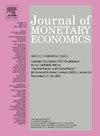Beyond the headline: How personal exposure to inflation shapes the financial choices of households
IF 4.3
2区 经济学
Q1 BUSINESS, FINANCE
引用次数: 0
Abstract
Using a unique set of bank account-level data from a period of volatile inflation in a small open economy in 2005–11 and interactive fixed effect estimation, we find that individual consumption spending responds to personal inflation exposure beyond the headline rate. Households are exposed to different inflation because they have different expenditure baskets. For each percentage point of higher personal inflation rate, they increase their spending by 1.4%. These responses are consistent with intertemporal substitution when households form their inflation expectations from their personal experience. Increased spending is financed with savings or borrowing, except when households are liquidity-constrained or over-indebted. Extra demand when inflation is already high can make inflation persistent and dependent on its current distribution.
在标题之外:个人对通货膨胀的敞口如何影响家庭的财务选择
利用2005 - 2011年一个小型开放经济体通胀波动时期的一组独特的银行账户水平数据和互动固定效应估计,我们发现个人消费支出对个人通胀风险的反应超出了总体通胀率。家庭面临不同的通货膨胀,因为他们有不同的支出篮子。个人通胀率每上升一个百分点,他们的支出就会增加1.4%。当家庭从个人经验中形成通胀预期时,这些反应与跨期替代一致。增加的支出由储蓄或借贷提供资金,除非家庭流动性受限或过度负债。在通胀已经很高的情况下,额外的需求可能会使通胀持续下去,并依赖于当前的分布。
本文章由计算机程序翻译,如有差异,请以英文原文为准。
求助全文
约1分钟内获得全文
求助全文
来源期刊

Journal of Monetary Economics
Multiple-
CiteScore
7.20
自引率
4.90%
发文量
90
审稿时长
74 days
期刊介绍:
The profession has witnessed over the past twenty years a remarkable expansion of research activities bearing on problems in the broader field of monetary economics. The strong interest in monetary analysis has been increasingly matched in recent years by the growing attention to the working and structure of financial institutions. The role of various institutional arrangements, the consequences of specific changes in banking structure and the welfare aspects of structural policies have attracted an increasing interest in the profession. There has also been a growing attention to the operation of credit markets and to various aspects in the behavior of rates of return on assets. The Journal of Monetary Economics provides a specialized forum for the publication of this research.
 求助内容:
求助内容: 应助结果提醒方式:
应助结果提醒方式:


